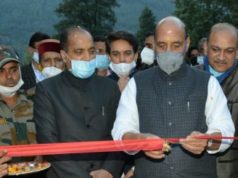Glaciologists of Snow and Avalanche Study Establishment (SASE) have claimed to develop technology that can delay snow melting. If SASE proved its claim then it can solve water problems in the Himalayan cold deserts.
It is for the first time that SASE scientists have broken the ice in snow harvesting in the world. Till date, nobody has developed the technology to harvest snow in the high-altitude region, said SASE scientists.
In snow harvesting, snow is retained for a longer time by delaying its melting, says Dr PS Negi, a glaciologist, who is heading the SASE team. “The snow harvesting structures are put in place in the glaciated region”, he added. The snow is lost after the avalanche debris brings it down and soon the glacier starts melting, says Dr Negi.
The scientists are keeping the technology of snow harvesting a guarded secret so that it gets a patent first and then acclaim worldwide. Once the snow harvesting technology is developed, glaciologists can come to term with the climate change and receding glaciers.
The glaciologists have made a promising start in the Pooh and Spiti and Kargil region in the cold Himalayan desert. The tribals in cold desert region face an acute shortage of water from May to October as the only source of fresh water is spring water.
The scientists say the accumulated snow can be harvested at key locations by putting check dams, surface dyke and gabion structures. In 2500 sq km area in Kargil, it was found that the spring water shows a higher discharge and did not help in recharging the existing groundwater sources and aquifers, they added.
A team of researchers in Kargil found that the four snow harvesting structures can tap 21,400 cubic metres of water. This water can be utilised for recharging groundwater and other needs.





